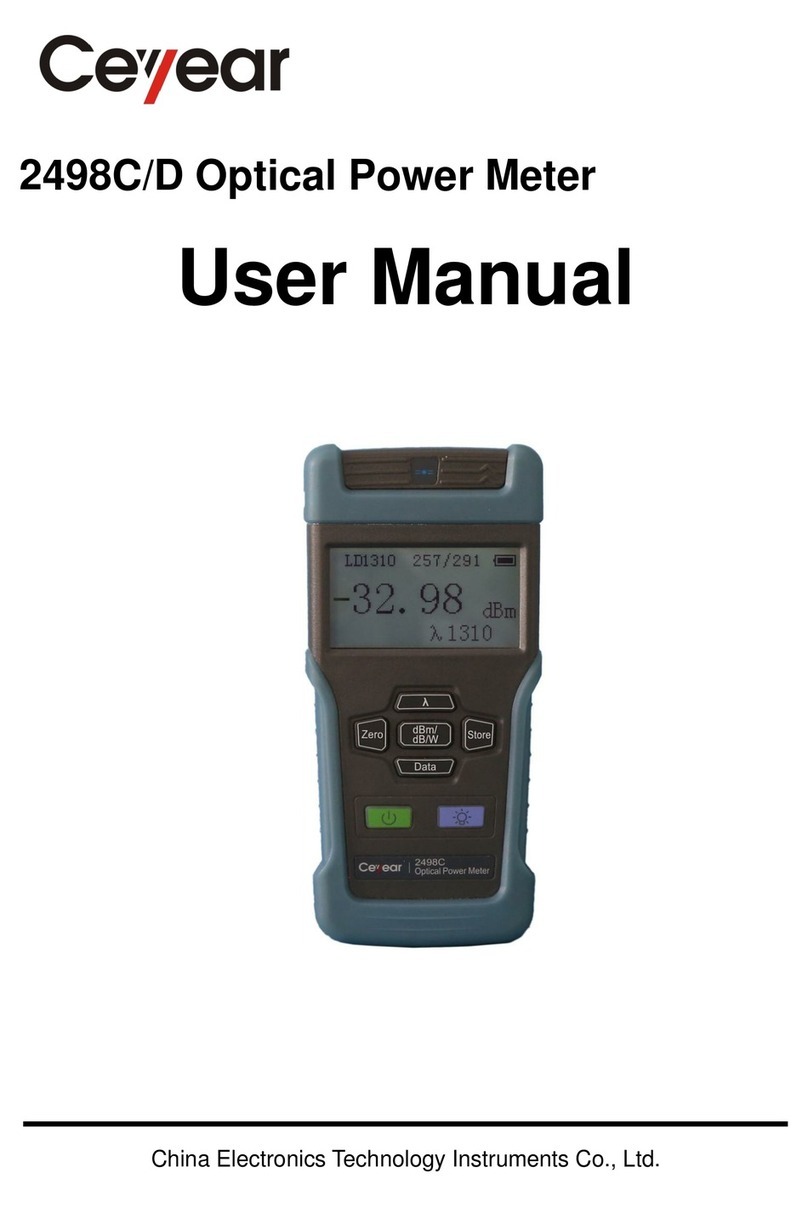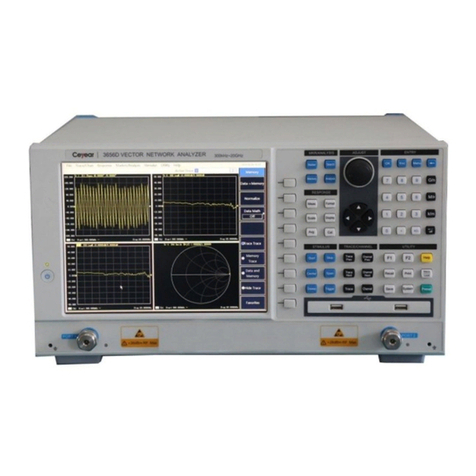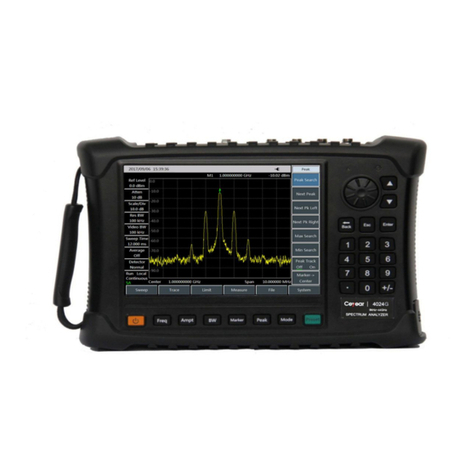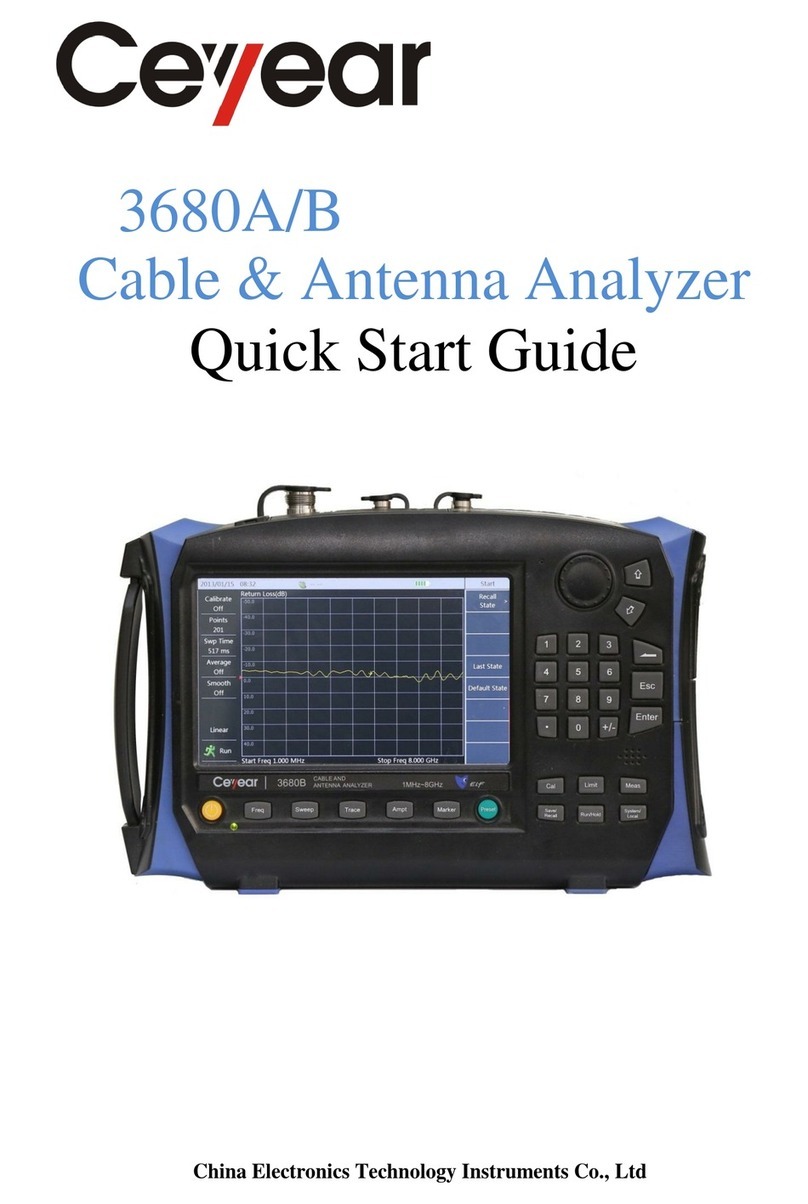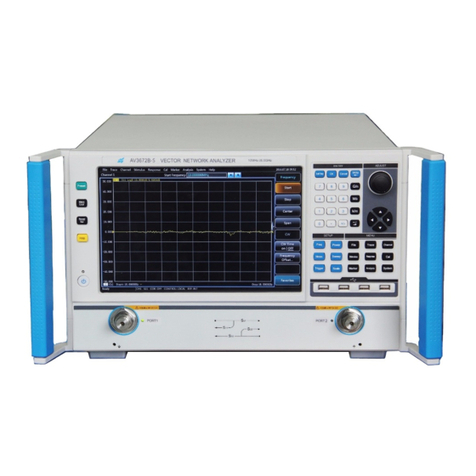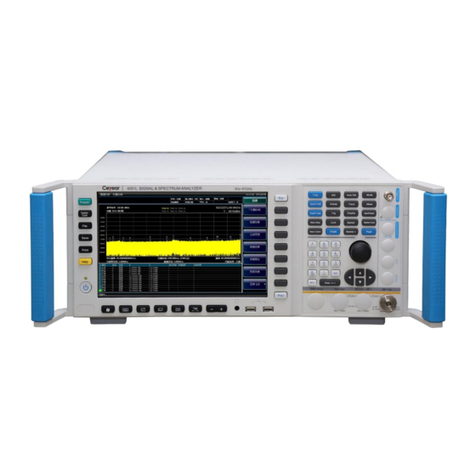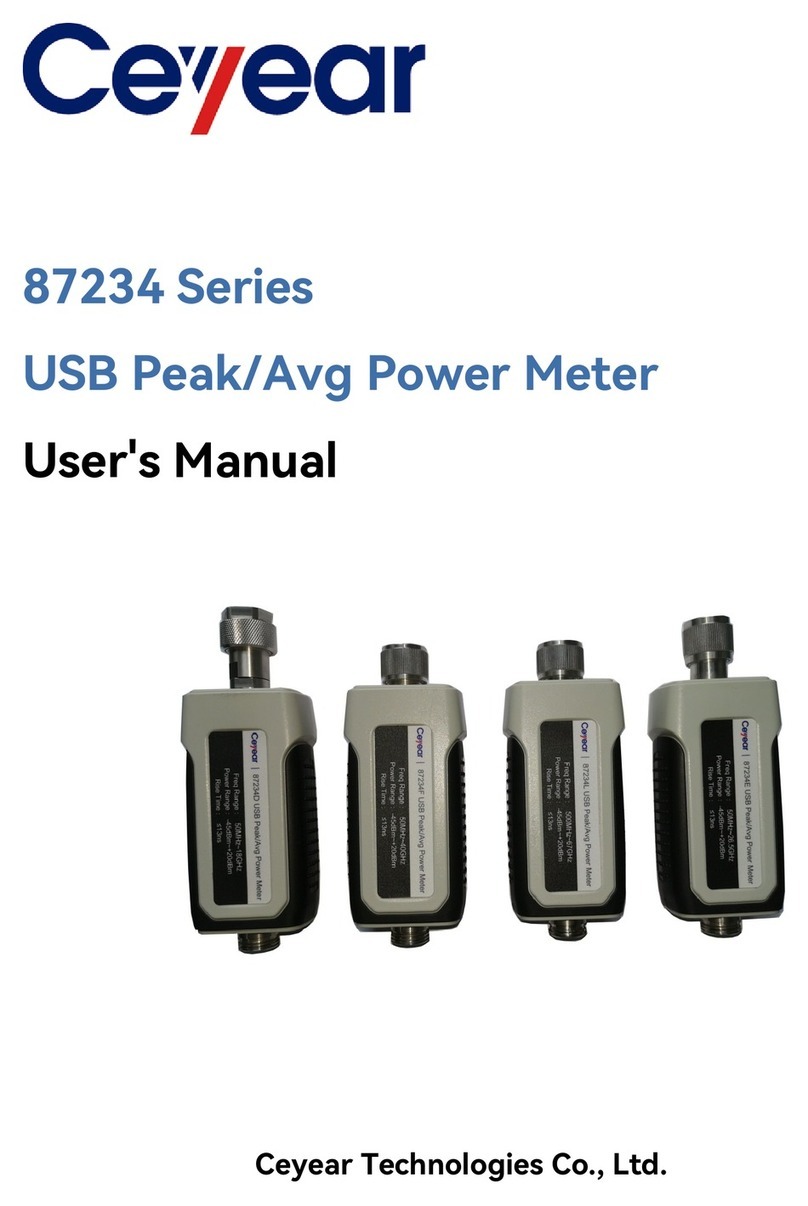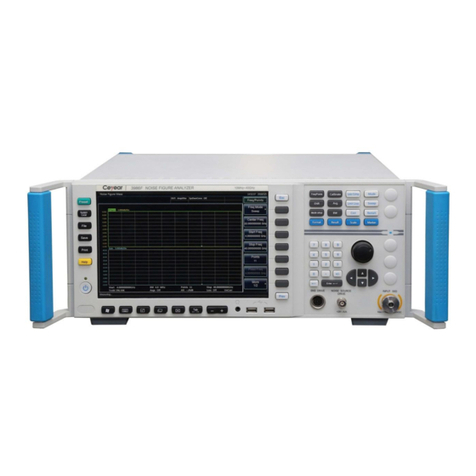
Environment and Safety Instructions
I. Safety Protection
1. Safety precautions for the instrument
1) Please use the designated packaging box for transportation, and protect the instrument against damage from
dropping or violent impacting.
2) Please select 100 V~120 V or 200 V~240 V AC 3-core stabilized power supply, so as to prevent the internal
hardware from being damaged by high-power peak pulse interference.
3) Keep the power supply properly grounded, as improper or wrong grounding may lead to unit damage.
4) Wear anti-electrostatic wrist or take other anti-electrostatic measures when operating the unit, so as to
prevent the unit from being damaged by the static electricity.
5) Avoid signals above 16 VDC, and prevent the signal power from exceeding 30 dBm; otherwise, the unit may
be damaged.
6) Neither insert any objects from the opening on the housing of unit nor pour fluids on or into the unit;
otherwise, short circuit may occur inside the unit and cause electrical shock, fire hazard or personal injury.
7) Never cover the grooves or openings that serve for internal ventilation on the unit; otherwise, the unit may
become overheated. Never place the unit on sofa, blanket or in a closed enclosure, unless a good ventilation
is provided.
8) Never place the unit on the heater, heating fan or other heat sources, and ensure that the ambient temperature
is not above the maximum temperature specified in this manual.
9) Please note that, the unit, once catching fire, may emit toxic gases or fluids that are harmful to human health.
2. Safety precautions for other instrument & equipment
1) Before connecting this unit, check its working condition and switch off the RF output, so as to prevent the
tested device from being damaged by the high-power signals output by the unit.
2) As the unit may output a higher power during self-test, please disconnect all the external equipment in this
case.
3) If, during the use of the spectrum analyzer, a fault warning indication occurs to tell the user that the spectrum
analyzer involves an abnormality, please turn off the RF switch or power switch and disconnect all the
external equipment to eliminate any possible influences on the tested device.
3. Personal safety precautions
1) Use a proper tool to transport the unit and its packaging box, and handle it gently to prevent personal injury
when the unit drops.
2) Keep the power supply properly grounded, as improper or wrong grounding may lead to personal injury.
3) When it becomes necessary to wipe off the unit, please power it off in advance to prevent hazard of electrical
shock. It is allowed to wipe the outside of unit using a dry or slightly wet soft cloth, and never attempt to
wipe its inside.
4) Any operator shall receive professional training before use, and be highly concentrated during use. The
operator of the unit shall be sound in body and mind; otherwise, personal injury or property loss may occur.
5) As the unit involves potential hazard of microwave radiation when working at a high power, please take
corresponding radiation prevention measures.
6) Never use the unit when its power line is damaged. Please check on a regular basis if the power line is
normal. Take appropriate safety protection measures and place the power line in such a proper way that it
will not be damaged and anybody will not be stumbled or electrocuted by the power line.
7) Never use the unit outdoors in bad weather like thunderstorm, so as to prevent unit damage or personal
injury.
8) Neither insert any objects from the opening on the housing of unit nor pour fluids on or into the unit;
